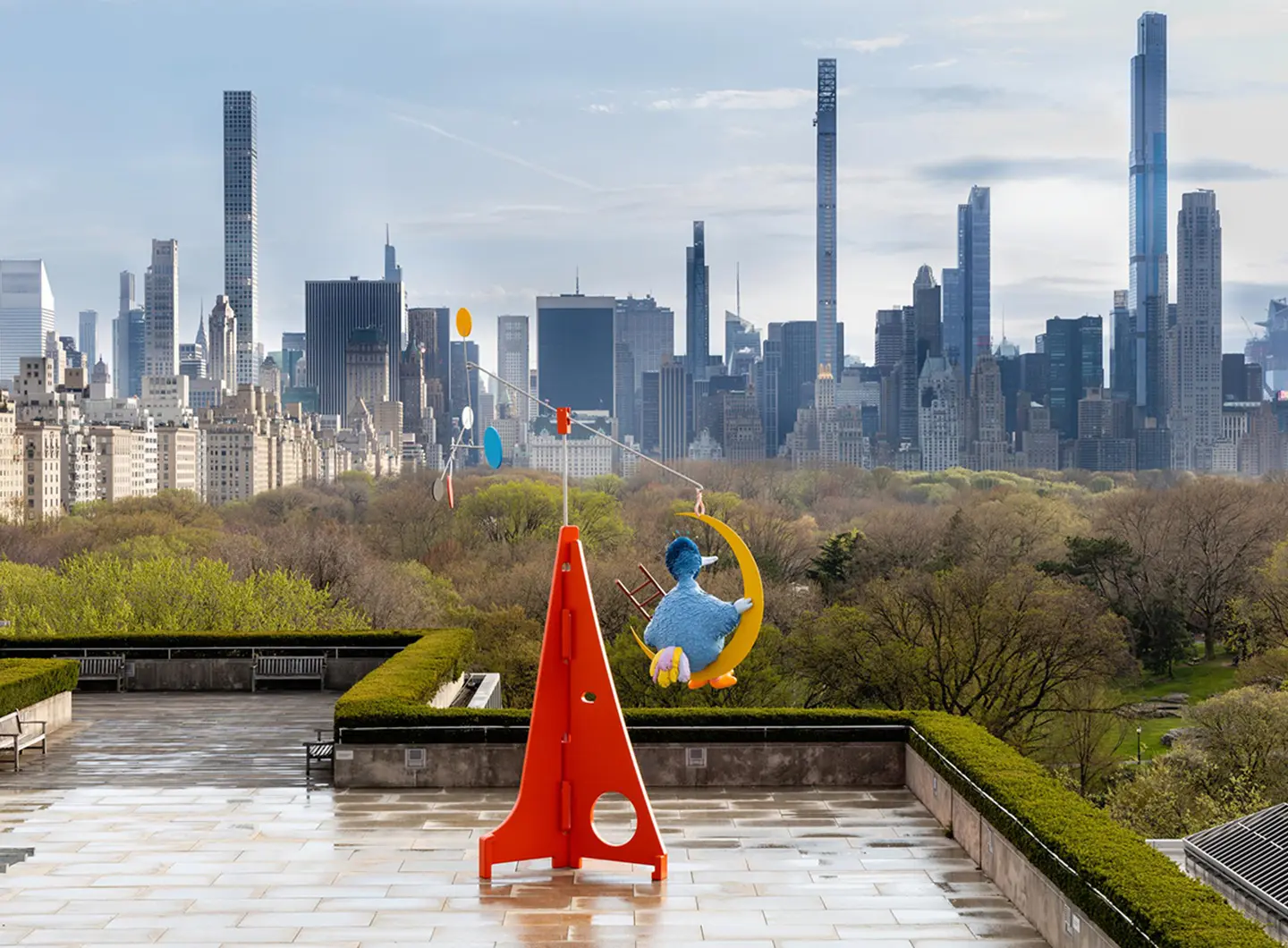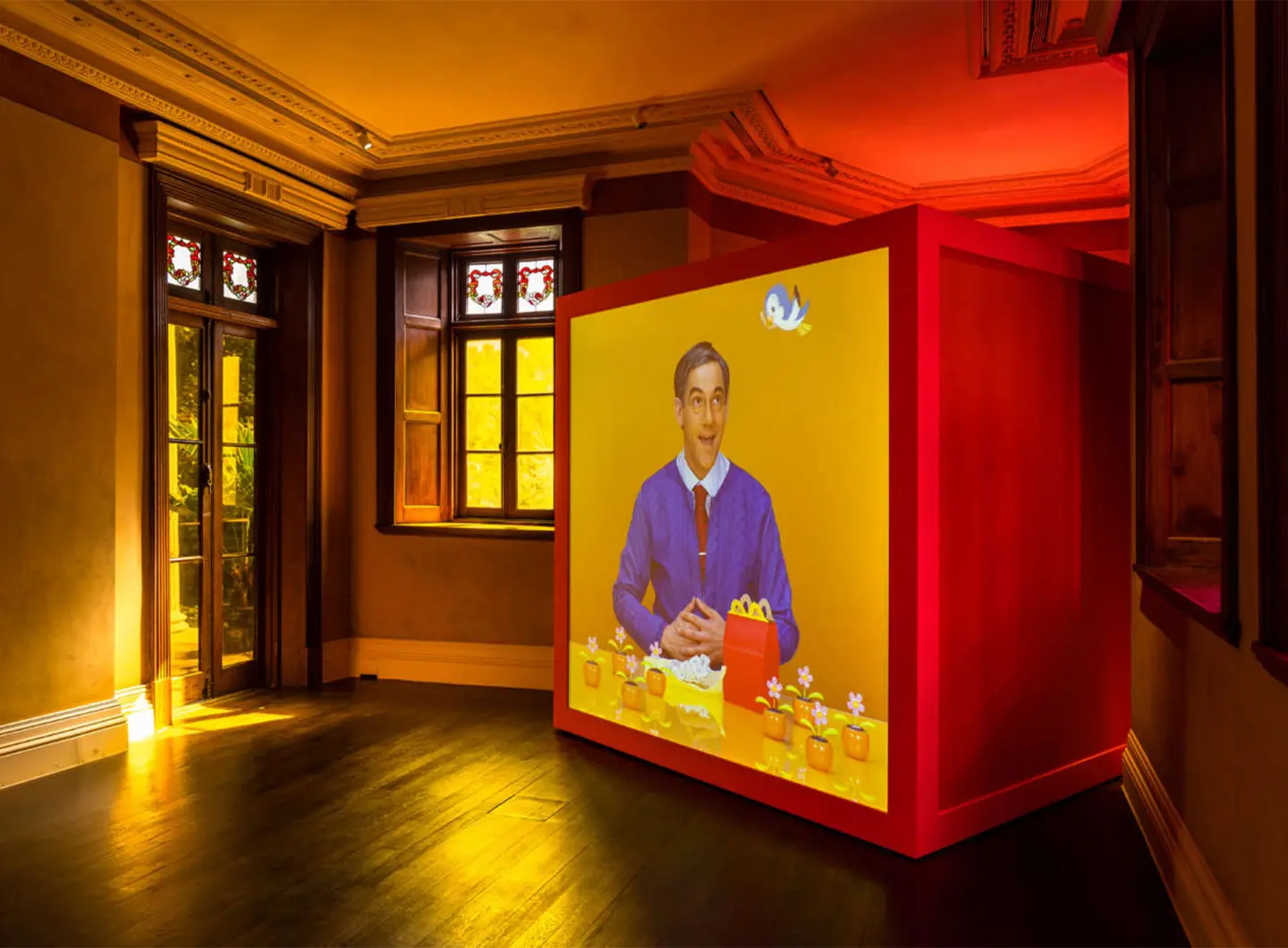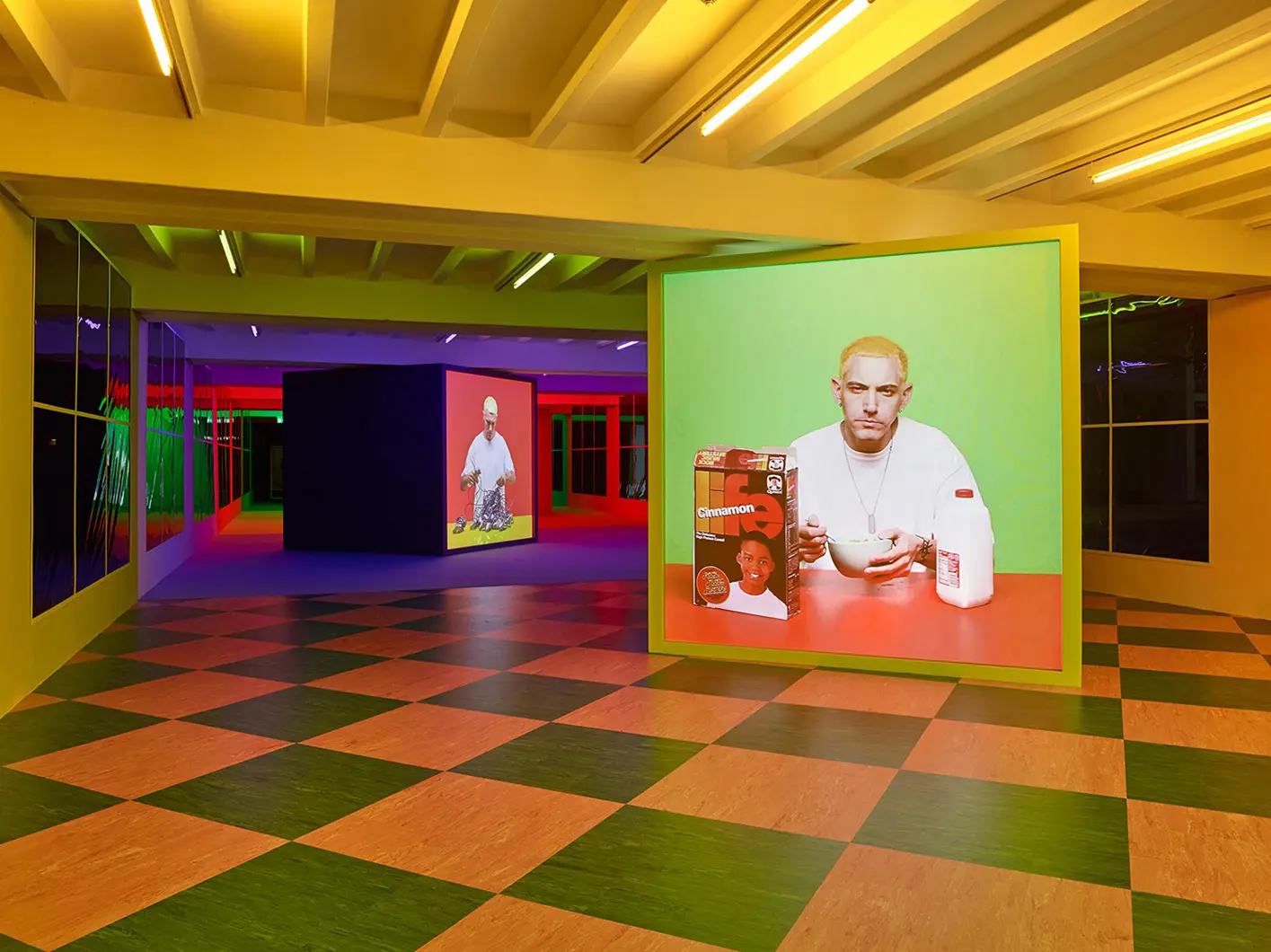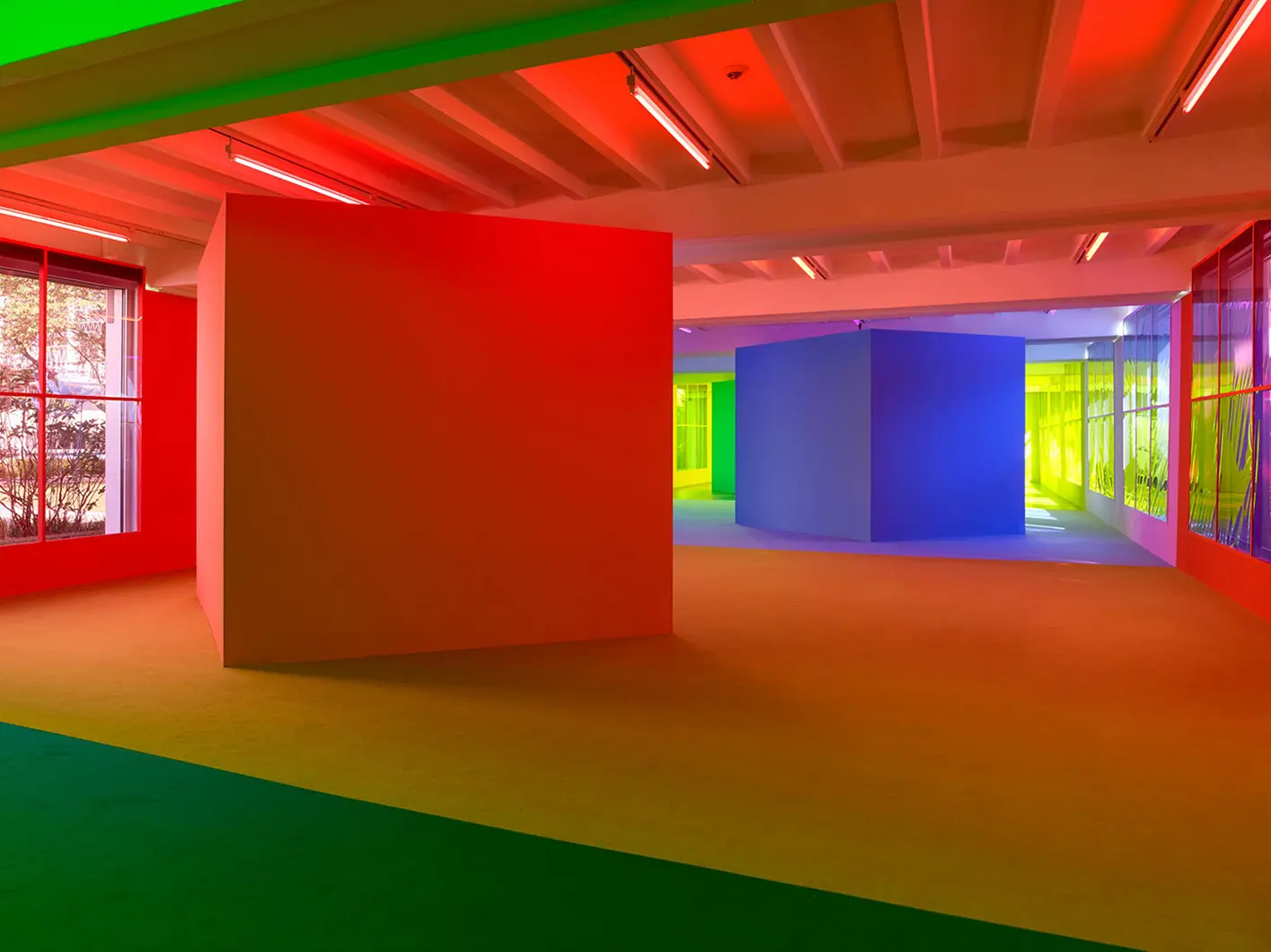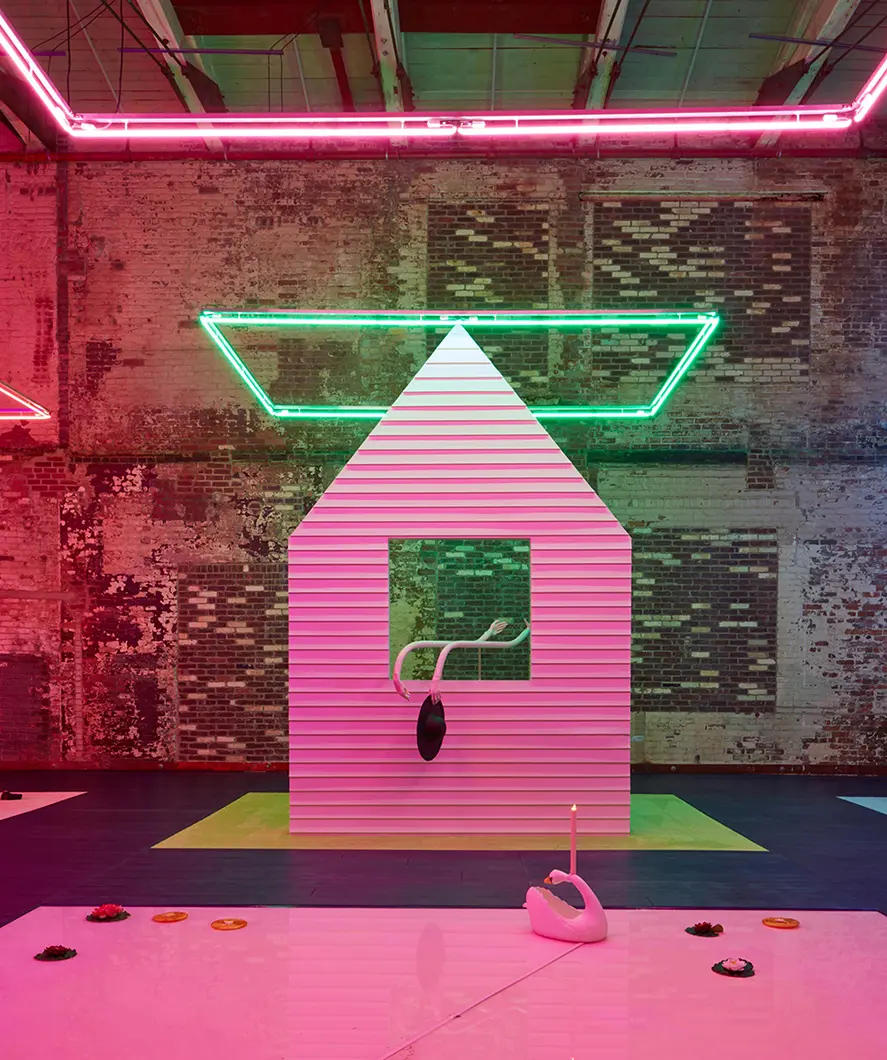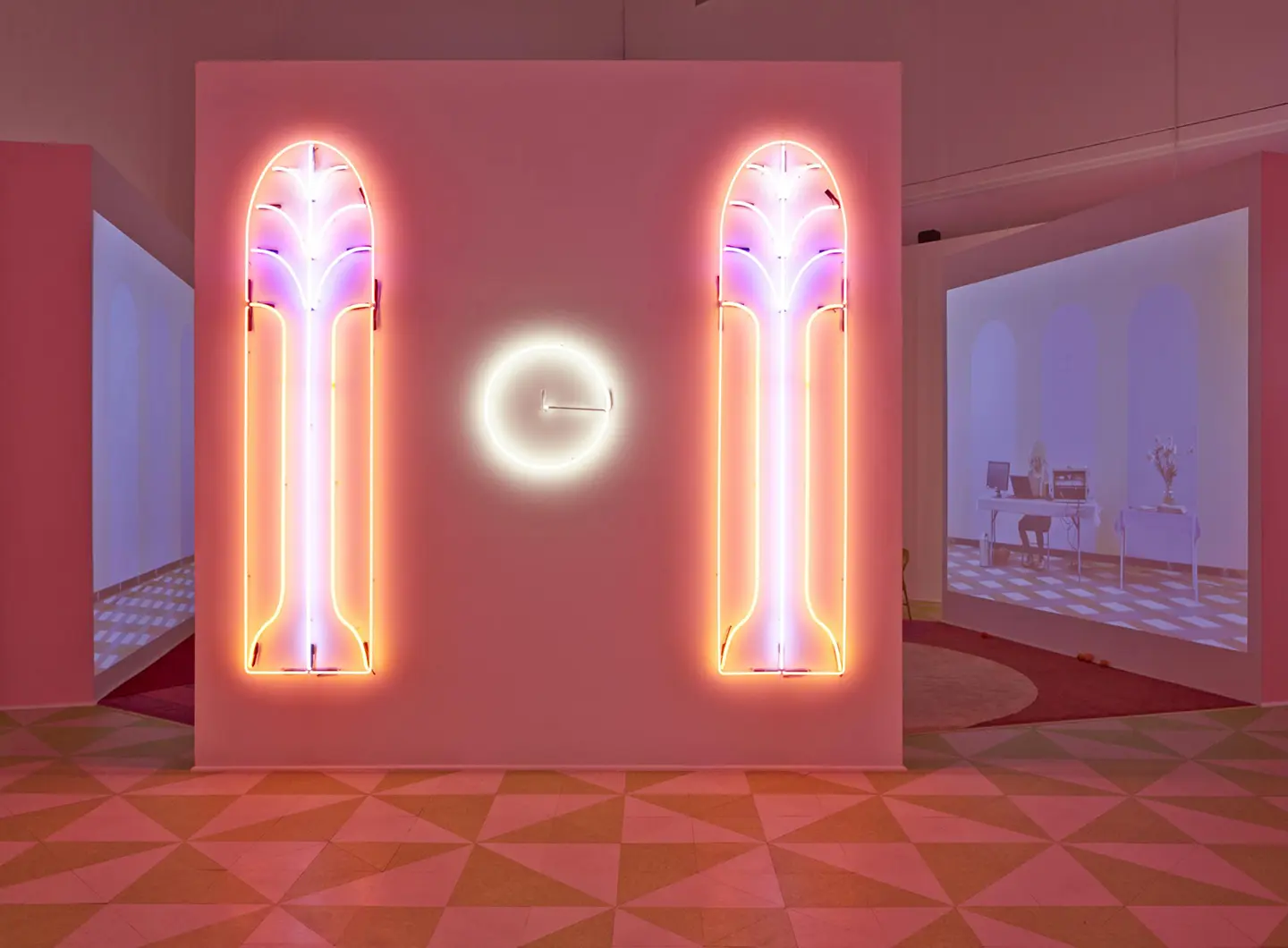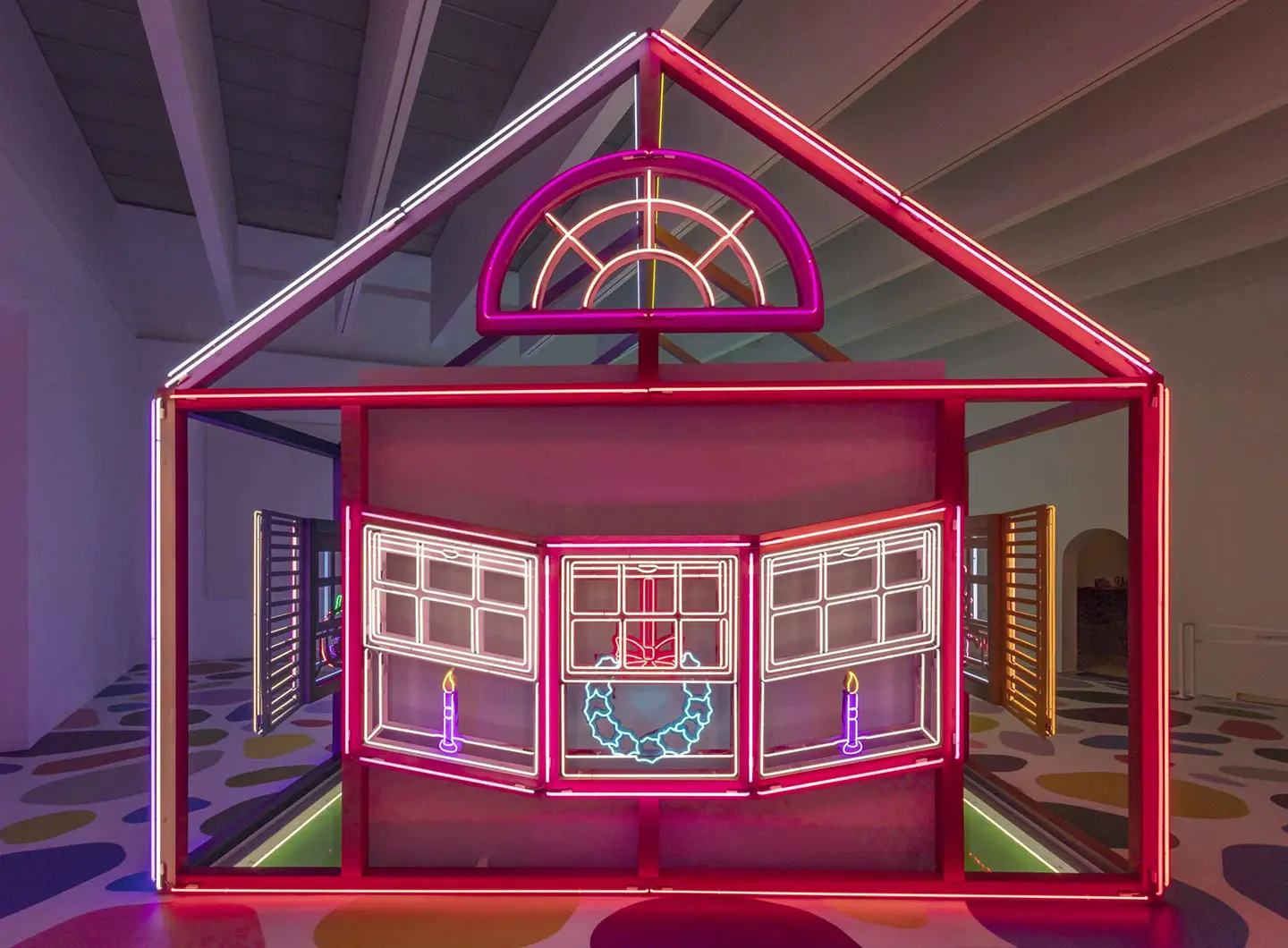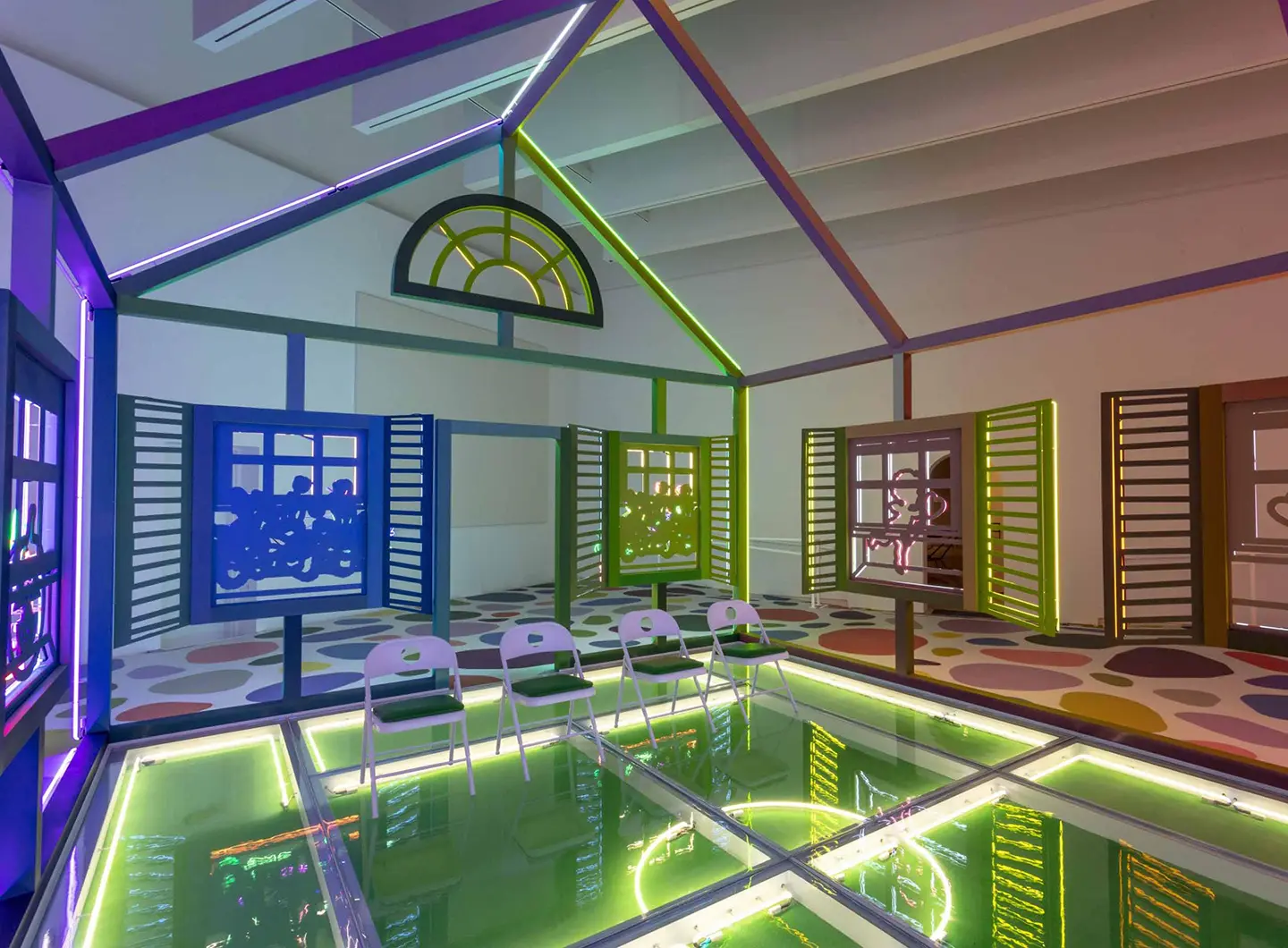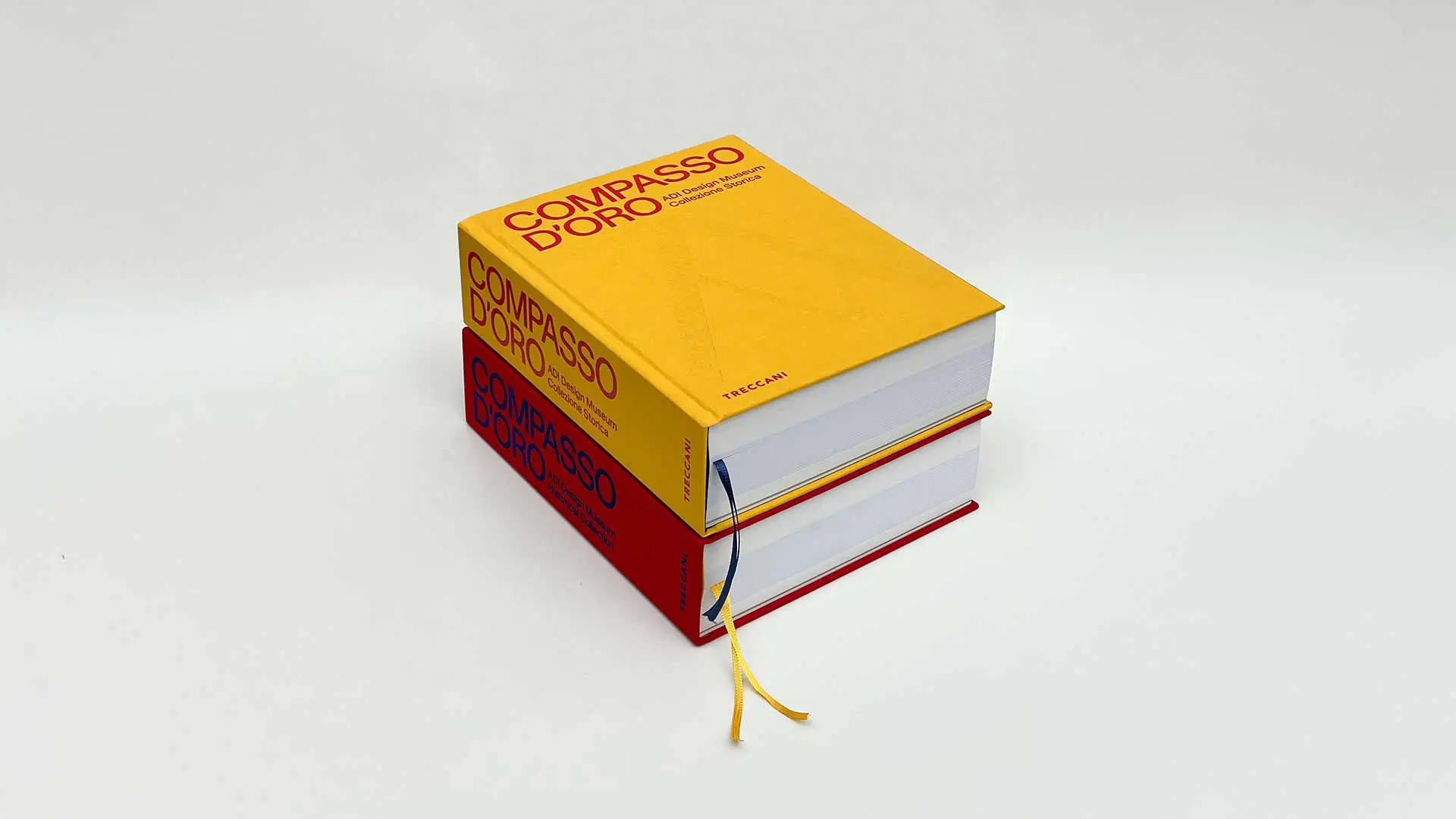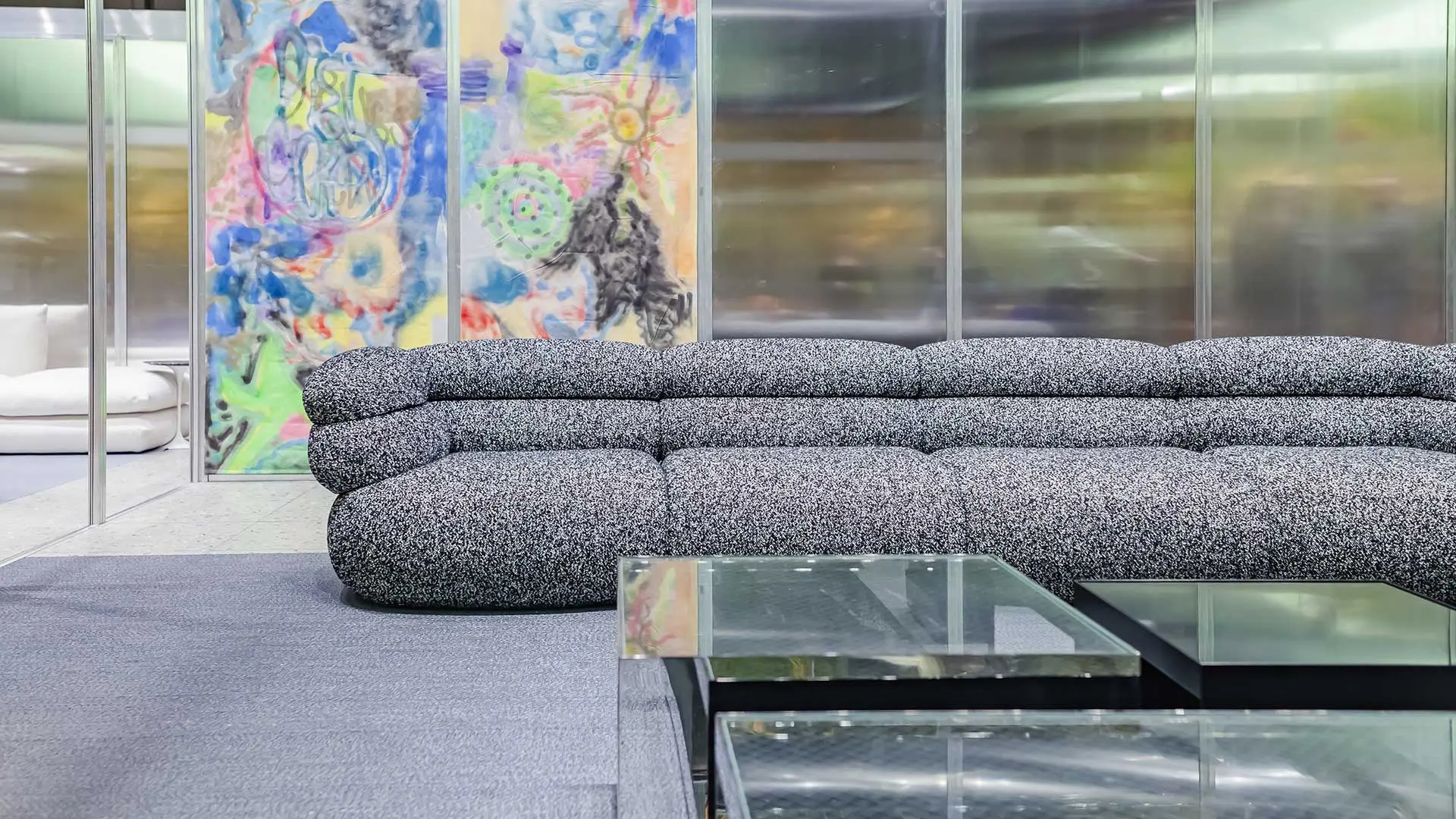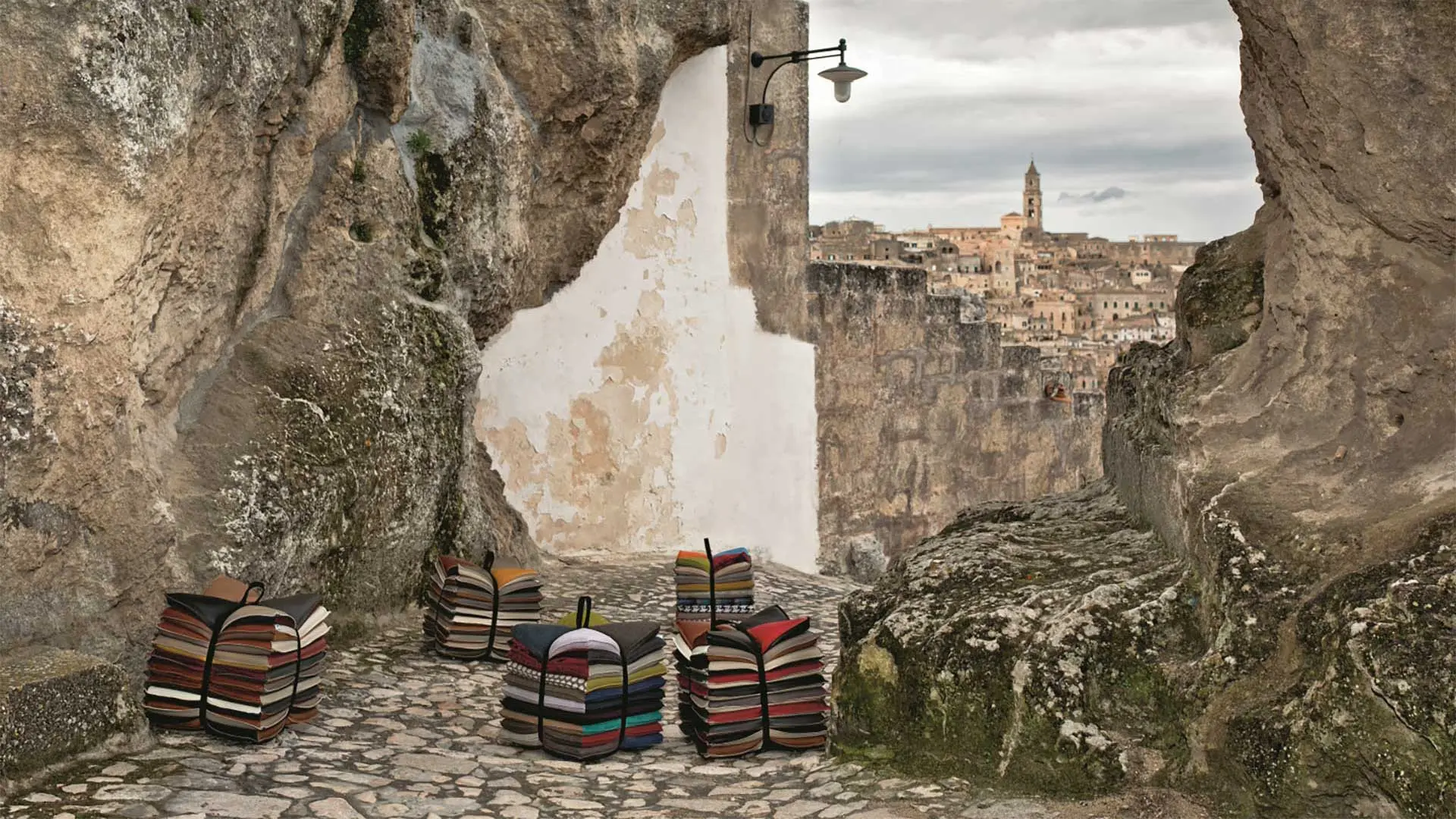Treccani’s latest book, edited by Beppe Finessi and presented at the ADI Design Museum, provides a comprehensive overview of the story of design told through the prestigious award
The total work of art according to Alex Da Corte
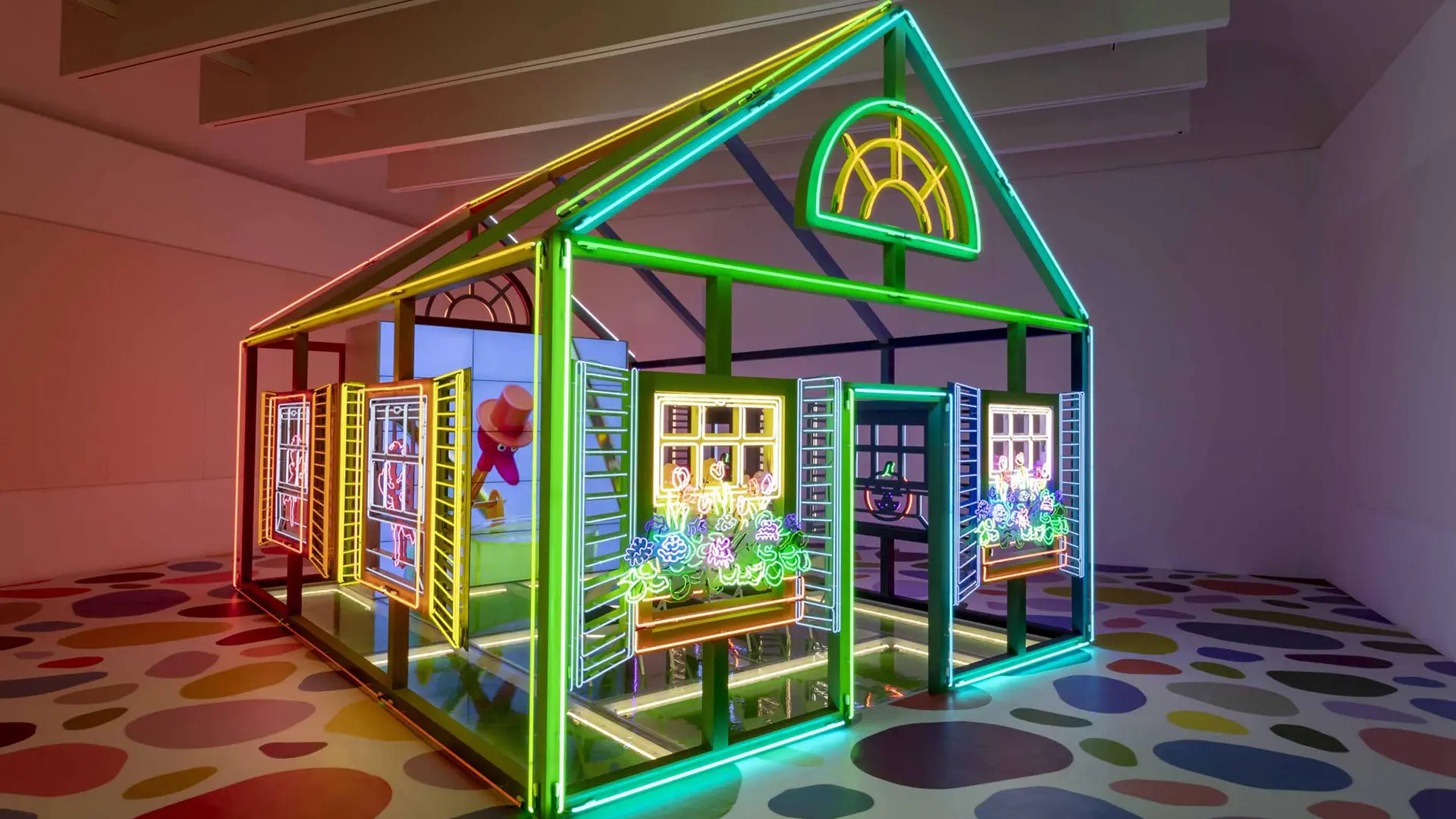
Alex Da Corte, Rubber Pencil Devil, Carnegie International, 57th Edition, Carnegie Museum of Art, Pittsburgh, ph. Tom Little
Amongst other things, Alex da Corte is one of the most sensitive artists of his generation with regard to his relationship with spaces and his enmeshing of fiction and reality. Over the last few years, his prolific output has generated a series of fascinating immersive spaces that interrogate the present …
Over the last 15 years, the American artist Alex Da Corte (1980, Camden - NJ) has developed an entirely personal language, informed by a total refashioning of reality, in the most paradoxically artificial sense of the ponderous word, as a symbolic construction generated by decades of representations of fiction and the waste engendered by the infinite spectacle of consumer products. However, Da Corte doesn’t just represent the consumer and media world through striking
icons as did the Pop artists; he reifies that world, turning it into pure space, in which each element arranged in a multimedia approach is designed to translate something fleeting, immaterial, that we always think we recognise on a screen but which appears unable to exist other than on a luminous surface. Da Corte contrasts an analogical version of augmented reality with a present in which we are destined to be lured into irksome metaverses explored while “bandaged” by digital visors, apparently giving new meaning to the Wagnerian concept of Gesamtkunstwerk (total work of art).
On the many prestigious occasions for which this prolific artist has designed installations, Da Corte has stood out as a bold creator of objects and a sophisticated architect of spaces, careful to allow the decorative element provided by patterns and vividly coloured wallpaper, objects and furniture to coincide with the “textures” and fluo palette of his videos, veritable extensions of the real spaces. From early works such as Easternsports (2014) at the University of Pennsylvania, to exhibitions such as Devil Town (2015), held at the Gió Marconi gallery in Milan, it has been clear to just what extent their overall scenographic and estranging sense is achieved through the masterly calibration of every large and small prop and architectural element, fielded from an almost infinite stylistic repertory. It is not a case, as might easily be assumed, of a post-modern exercise, because Da Corte’s references have already been lost, jumbled up, remixed and totally annulled by the many stratifications of history.
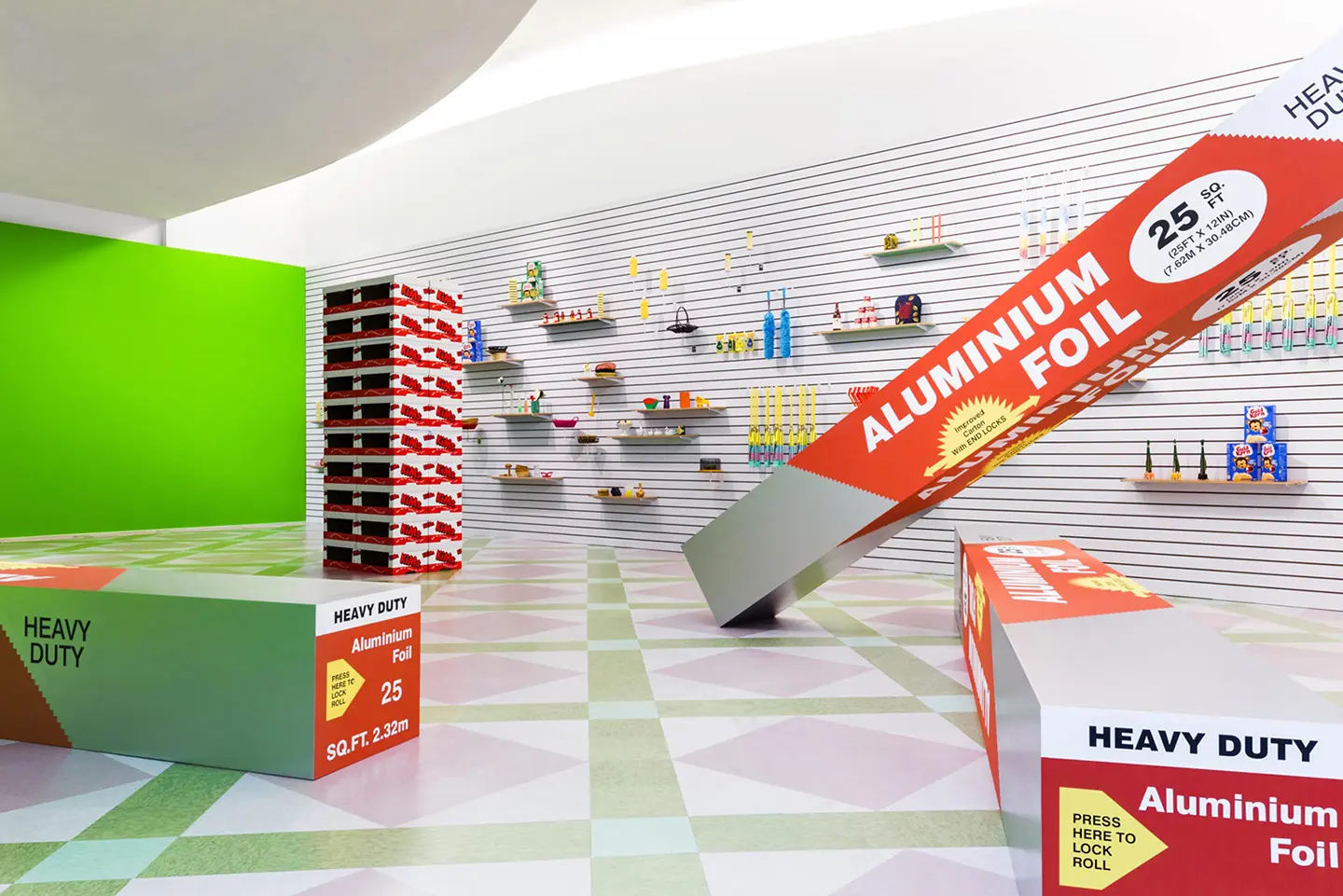
Alex Da Corte, 50 Wigs, Hearning Museum of Contemporary Art, Herning, 2016-2017
Should we be seeking “lofty” references, it is to the prototypes such as those created for the pioneering installations of the British Independent Group artists, in exhibitions such as the seminal This is Tomorrow (1956) and, in particular, in spaces such as the Fun House conceived by Richard Hamilton, John Voelcker and John McHale, that we should turn. Similarities can also be found with present-day artists of his own generation, such as the French Neïl Beloufa, who recently took part in the large exhibition Digital Mourning (2021, Hangar Bicocca) in Milan. The fact that these references and homologies can be picked up in Da Corte’s work is of scant importance, because the most meaningful impact for visitors comes from engaging with the settings informed by imagery that is as fictional as it is concrete and rooted in our experience as viewers; the three-dimensional works such Free Roses (2017 at the MASS MoCa in North Adams) and THE SUPƎRMAN (2018 at the Kölnischer Kunstverein, Cologne) render the spaces, interiors and colours more reminiscent of the world of The Simpsons or Roger Rabbit than of the sophisticated theories and work of masters such as Robert Venturi.
Da Corte wants us to pick up on the total continuity with the way in which we inhabit spaces that may be familiar from fictional works; in his exhibition C-A-T Spells Murder, the inspiration came from the cover of the novel Cat (1997), from the successful Fear Street series by the author of horror stories for adolescents R. L. Stine. Da Corte is less interested in the storytelling or any form of consistency with the content of the book than in its imagery, appropriating and extending it in his own way in real space. Equally, for the exhibition Helter Shelter or: The Red Show! or… (2020) at the London gallery Sadie Coles HQ, the artist created huge walls/canvases that made it seem as though visitors had shrunk, giving the sensation of having penetrated the gigantic pages of an alphabet book, with occasionally ambiguous illustrations ransacked from the world of comics, cartoons and other not immediately recognisable sources. Modern neurobiology highlights the substantial difference between the completely formed brain of an adult, rationally guided by the prefrontal cortex, and the functioning of the adolescent mind, guided by the limbic system (or emotional brain) – whether he is aware of these theories or not, Da Corte blends with calculated brilliance instances that are as rational in spatial terms with effects that are equally camp and catchy, typical of the attention economy that controls our present.
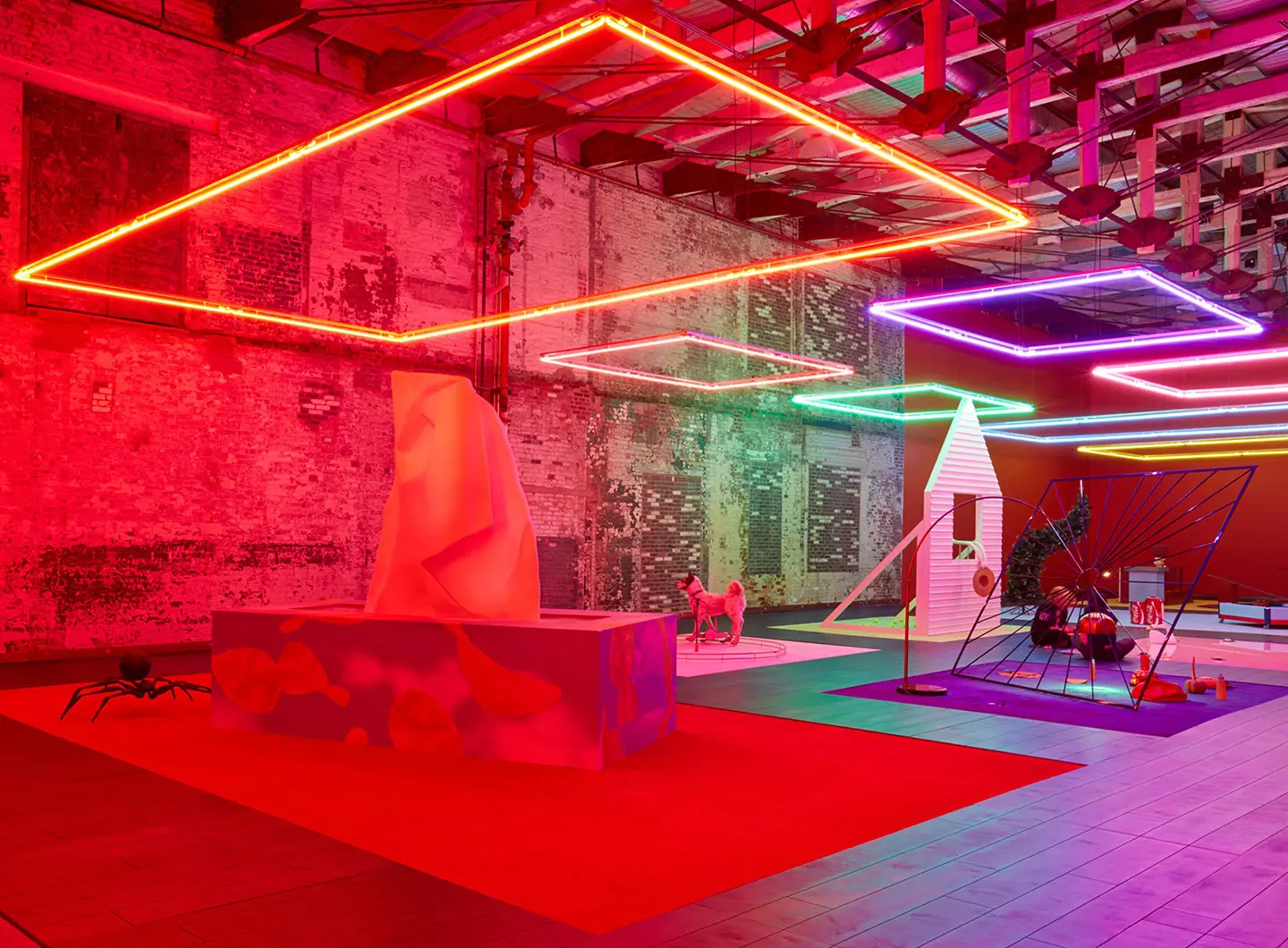
Alex Da Corte, Free Roses, MASS MoCA, North Adams, 2016-2017, ph. John Berdano
In 2020 Alex Da Corte presented his umpteenth endeavour, Rubber Pencil Devil, in the luxurious Liberty-style surroundings of Prada Rong Zhai in Shanghai, a rigorously site-specific version of his 2018 piece of video art; a film composed of 57 chapters and a prologue, in an installation comprising 20 large rear-projection video cubes designed by the artist on the two main floors of the building, conferring a different spatial configuration to the work. The film features characters running riot in a Technicolour universe, played by the artist himself, intent on transfiguration and dressing up as characters ranging from Eminem to Mister Rogers and the Wicked Witch of the West from Oz, to the Sesame Street puppets.
Recently too, the Metropolitan Museum of Art in New York invited the artist to design a site-specific sculpture installation for its hanging garden, named after Iris and B. Gerald Cantor. The work, built of stainless steel, fibreglass and aluminium and entitled As Long as the Sun Lasts, was on exhibit from 16th April to 31st October 2021. It was a huge mobile that the artist thought up during the toughest period of the pandemic, drawing on his reading of Italo Calvino’s book of the same name, a story about intergalactic travellers and their search for a habitable planet at a time when the sun was still being formed in our own galaxy. The large sculpture, exactly like those of Calder, whom he deliberately cites, moves with the wind, and aside from the abstract forms and primary colours, it is distinguished by a part comic part melancholic large blue bird which bears a similarity to Big Bird from the Muppet Show, an operation that the New York Times described as an Instagram to die for, which also makes it belong both to the real space and to the virtual dimension simultaneously


